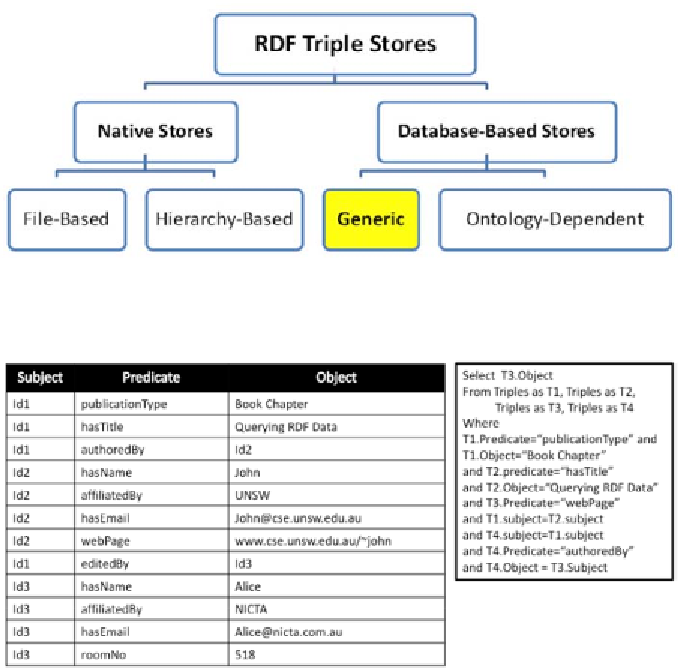Database Reference
In-Depth Information
Figure 3. Classification of RDF triple stores
Figure 4. Relational representation of triple RDF stores
vast amounts of data very efficiently using its powerful indexing mechanisms. In principle, RDMBSs
derive much of their performance from sophisticated optimizer components which makes use of physi-
cal properties that are specific to the relational model such as: sortedness, proper join ordering and
powerful indexing mechanisms. In fact, a main advantage of the relational-based approach of processing
RDF data is that it can makes use of a large and robust body of work on query planning and optimization
available in the infrastructure of relation query engines to implement efficient and scalable SPARQL
query processors. For example, Cyganiak (2005) presented an approach for compiling SPARQL queries
into standard relational algebraic plans. The relational RDF stores can be mainly classified to the fol-
lowing categories:
1.
Vertical (triple) table stores
: where each RDF triple is stored directly in a three-column table
(subject, predicate, object).
2.
Property (n-ary) table stores
: where multiple RDF properties are modeled as n-ary table columns
for the same subject.
3.
Horizontal (binary) table stores
: where RDF triples are modeled as one horizontal table or into
a set of vertically partitioned binary tables (one table for each RDF property).

